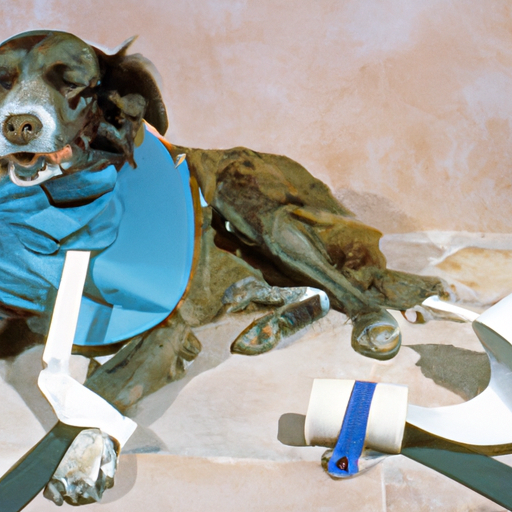As a dog owner, hearing the words “your dog needs surgery” can spell a moment of panic. When it comes to TPLO surgery, understanding what the procedure involves can provide some peace of mind. This in-depth guide covers everything you need to know about TPLO surgery for dogs.
- Table of Contents
- What is TPLO Surgery?
- Why is TPLO Surgery Needed?
- The TPLO Surgery Procedure
- Recovery and Post-Operative Care
- The Cost of TPLO Surgery
- Potential Risks and Complications
-
Frequently Asked Questions
-
Key Takeaways
- TPLO, or Tibial Plateau Leveling Osteotomy, is a surgical procedure to fix a torn cranial cruciate ligament (CCL) in dogs.
- TPLO surgery changes the dynamic of the dog’s knee so that the CCL is no longer needed for stability.
- Post-operative care and rehabilitation are crucial for a successful recovery.
- The cost of TPLO surgery varies widely, depending on factors like location, the dog’s weight, and the complexity of the case.
- While TPLO surgery has a high success rate, there are potential risks and complications to be aware of.
What is TPLO Surgery?
TPLO, or Tibial Plateau Leveling Osteotomy, is a surgical procedure designed to treat a torn cranial cruciate ligament (CCL) in dogs. The CCL, similar to the ACL in humans, is a band of tissue that connects the femur (thigh bone) to the tibia (shin bone), helping to stabilize the knee joint. When this ligament is torn or damaged, it can cause severe pain and lameness in dogs.
TPLO surgery is considered one of the most effective treatments for CCL tears in dogs, particularly for larger breeds and active dogs. However, it’s not the only option; there are other surgical procedures like TTA (Tibial Tuberosity Advancement) and ECLS (Extracapsular Ligament Suture) that might be considered (source).
Why is TPLO Surgery Needed?
The primary reason for a dog to undergo TPLO surgery is a torn or ruptured CCL. This condition can occur due to a sudden injury or chronic wear and tear, especially in overweight or active dogs. When the CCL is torn, the dog experiences pain and instability in the knee joint, leading to lameness and decreased quality of life.
TPLO surgery aims to change the dynamics of the knee joint, making the CCL unnecessary for stability. This is achieved by reorienting the tibial plateau, the part of the tibia where the femur makes contact. By leveling this area, the femur no longer slides backward when the dog puts weight on its leg, thus eliminating the need for the CCL.
The TPLO Surgery Procedure
The actual TPLO surgery involves several steps. First, the veterinarian will make an incision to access the knee joint and remove any damaged parts of the CCL. A special saw is then used to make a cut (osteotomy) in the tibial plateau. The top part of the tibia is rotated until the tibial plateau reaches a level angle, typically between 5 and 10 degrees. A metal plate and screws are then placed to hold the bone in its new position while it heals (source).
Recovery and Post-Operative Care
Recovery from TPLO surgery is a process that requires careful post-operative care. Immediately after surgery, your dog will need to stay at the veterinary clinic for monitoring. Pain management during this time is crucial, and most dogs will receive a combination of medications to control pain and inflammation.
Once home, your dog’s activity will need to be restricted for several weeks. This includes limiting running, jumping, and playing, as well as using a leash for all bathroom breaks. Physical therapy exercises may also be recommended to help your dog regain strength and mobility in the knee.
The healing process for the bone usually takes about 6-8 weeks, but full recovery can take several months. Regular follow-up appointments with your vet will be necessary to monitor your dog’s progress (source).
The Cost of TPLO Surgery
The cost of TPLO surgery can vary widely, depending on factors like the location, the dog’s weight, and the complexity of the case. On average, you can expect to pay between $2,500 and $4,500 for the surgery. This cost typically includes the pre-operative evaluation, anesthesia, the surgery itself, post-operative care, and follow-up visits.
Potential Risks and Complications
Like any surgical procedure, TPLO surgery carries potential risks and complications. These can include infection, reaction to anesthesia, bone fracture, and implant failure. In rare cases, dogs may also develop arthritis or other orthopedic conditions after surgery.
Frequently Asked Questions
-
What is TPLO surgery for dogs?
TPLO, or Tibial Plateau Leveling Osteotomy, is a surgical procedure designed to treat a torn cranial cruciate ligament (CCL) in dogs. -
How long does it take for a dog to recover from TPLO surgery?
The bone healing process usually takes about 6-8 weeks, but full recovery can take several months. -
How much does TPLO surgery cost?
On average, you can expect to pay between $2,500 and $4,500 for TPLO surgery. -
Are there alternatives to TPLO surgery?
Yes, other surgical options for treating a torn CCL in dogs include TTA (Tibial Tuberosity Advancement) and ECLS (Extracapsular Ligament Suture).
In conclusion, TPLO surgery can significantly improve the quality of life for dogs suffering from a torn CCL. As with any major decision regarding your pet’s health, it’s important to discuss all options with your veterinarian to determine the best course of action.



